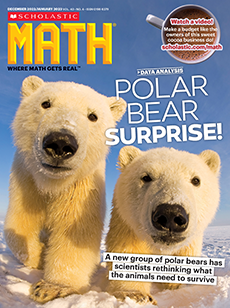Ask students to brainstorm measurements that would be very large or very small (e.g., the distance between Earth and the sun or the width of a strand of hair). Then ask: How would you write those measurements? How many zeroes would you need? How long would the numbers be? Then tell students they are going to learn about an easier way to write very large or very small numbers called scientific notation.
CCSS: 8.EE.A.3, *8.EE.A.1
TEKS: 8.2C, *6.7A
*Additional standards covered in Skill Builders.
